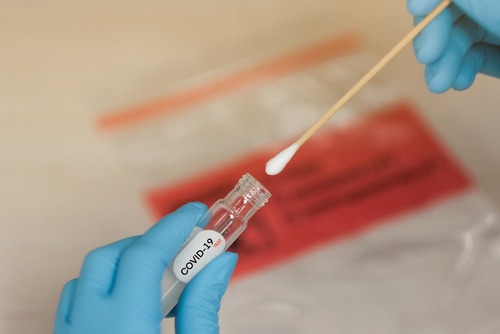
With diagnostic testing as important as ever in the battle to contain COVID-19, researchers from various institutions under the umbrella of the National Institutes of Health (NIH) have banded together to create a new sample preparation method for detecting SARS-CoV-2.
The collaboration has resulted in a simpler, faster, cheaper test overall.
It manages this by cutting out the need to extract the SARS-CoV-2 virus’s genetic RNA material. Traditionally, the RNA must be pulled from samples, which requires RNA extraction kits: another potential supply and manufacturing hurdle in the larger chain. This has become more pronounced as new virus strains continue to emerge.
“We used nasopharyngeal and saliva samples with various virion concentrations to evaluate whether they could be used for direct RNA detection,” Dr. Bin Guan, the lead author of a report on the technique published this week in iScience, said. Guan is also a fellow at the Ophthalmic Genomics Laboratory. “The answer was yes, with markedly high sensitivity. Also, this preparation inactivated the virus, making it safer for lab personnel to handle positive samples.”
Supported by a federal grant, the effort united researchers from the National Eye Institute (NEI), the NIH Clinical Center (CC), and the National Institute of Dental and Craniofacial Research (NIDCR). They utilized a chelating agent made by Bio-Rad to preserve RNA in samples for detection and tested various chemicals using synthetic and human samples. This allowed them to identify those that could preserve RNA in samples with minimal degradation and still allow direct detection of the virus. They then validated the test at the Clinical Center with conventional RNA extraction and testing. The new preparation method greatly increased the RNA yield available for testing.
“We think this novel methodology has clear benefits of increasing sensitivity, cost, and time savings for testing,” said Dr. Robert Hufnagel, chief of the NEI Medical Genetics and Ophthalmic Genomic Unit and one of the team leads. “The method stabilizes the RNA at room temperature for easier transport, storage, and handling in clinical settings.”




